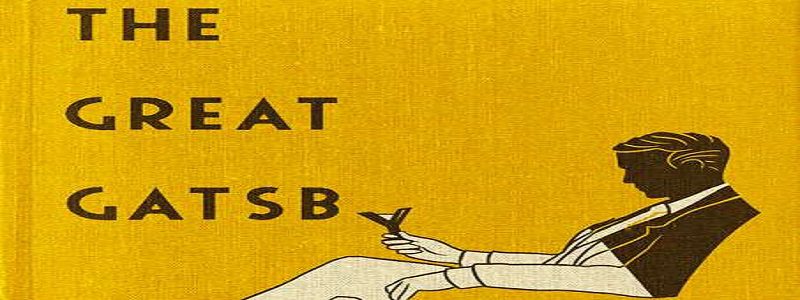
‘The Great Gatsby’ and Assessing Student Argumentation
Beatrice exceeds her [cousin] as much in beauty as the first of May doth the last of December.
— Much Ado About Nothing, I.i.185-187
Shakespeare was more than a little in love with the month of May, in Much Ado and elsewhere. Teachers, not so much — despite the narrowing chasm that the month portends to summer and its mostly more relaxed rhythms. The reason for teachers’ coolness toward the “Rose of May” (Hamlet, IV.5.133) can be named in a single word: assessment. May is testing season, and with that comes a flurry of misgivings, about misuse, overuse, curricular de-railment, unwarranted and discouraging final verdicts.
Assessment, properly designed and properly utilized, can be crucial to understanding what is working, what impact we’ve had on students, where students still need to grow, what isn’t working. Argument-Centered Education aims to use assessment properly, and it does so in collaboration with its school and teacher partners (same as it does all of its work). Recently, we have been working with one of our partner high schools on year-end assessment of argumentation and thinking skills. The example from this project that this post will focus on was built into a unit on F. Scott Fitzgerald’s The Great Gatsby (1925).
We worked together to formulate unit-long debatable issues on The Great Gatsby, and we produced four strong ones, including:
Debatable Issue #1
The Great Gatsby has attained its status as a great American novel in large part because it succeeds in defining something essential about American cultural values. Tom Buchanan represents the aggressive industrialist, cold realism, and materialism; while, Jay Gatsby represents the creative innovator, dreamy idealism, and romanticism. In the two characters’ climactic struggle for the love of Daisy Fay Buchanan, the novel delivers the brutal truth that the story of America is the story of the triumph of Buchanan over Gatsby.
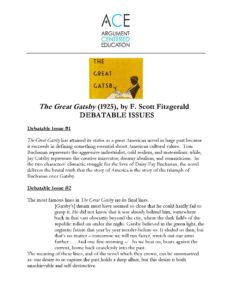 These debatable issues were connected to content delivery — comprehensive checks, quizzes, discussion questions — so that the interpretive arguments that students were to be asked to make in speaking and writing culminating performance tasks were properly prepared and embedded within a coherent curriculum.
These debatable issues were connected to content delivery — comprehensive checks, quizzes, discussion questions — so that the interpretive arguments that students were to be asked to make in speaking and writing culminating performance tasks were properly prepared and embedded within a coherent curriculum.
For example, what we wanted to do with the Study Guide is demonstrate how comprehension and discussion questions can be aligned with an argument focus. We color-coded many of the questions, aligning with the four debatable issues.
Dark green aligns with the aggressive materialism over dreamy idealism/romanticism theme.
Turquoise aligns with the re-capturing the past is illusory theme.
Blue aligns with the attitude toward the rich and money theme.
Black aligns with the world is corrupt and honesty/integrity doesn’t exist theme.
We didn’t align every last question to a debatable issue, though if pressed we could have. It’s not necessary to always be building arguments, of course — just to have an overall coherence and alignment with what the students should be doing, with what they are going to culminate their study. And almost all of the individually coded questions could be coded with multiple themes, so to some extent there’s an arbitrariness to which one gets selected over the others.
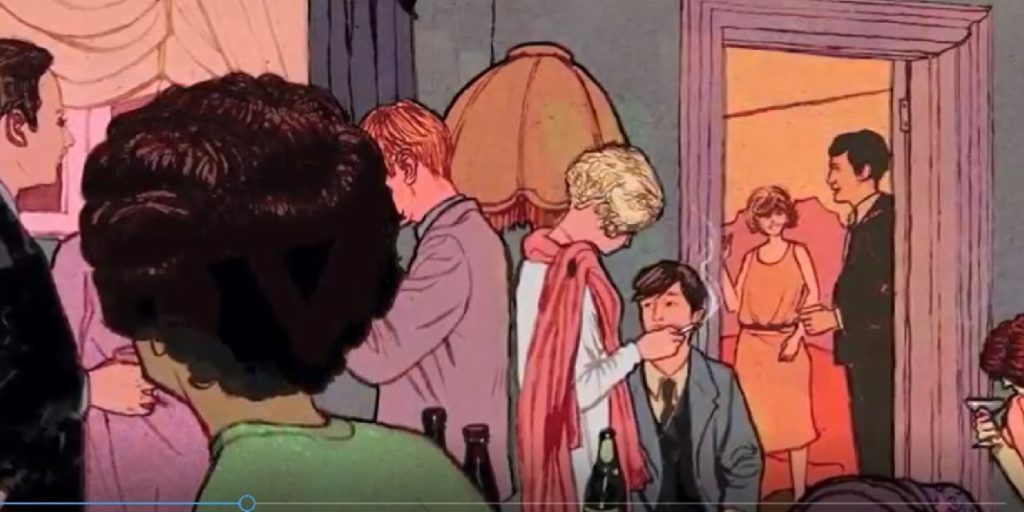
We built in the use of plot-summary video to help students get past the “de-coding” of the plot events and immediate character relationships, and to help them get into thinking through their interpretive positions, the arguments that would develop and support those positions, adducing the best evidence from the novel to back up those arguments, and how they would address the best of the skeptics’ counter-arguments.
Then we got to the assessment of students’ assimilation and understanding of argument concepts and skills, within the context of the study of this quintessentially American novel. We build basic argumentation assessments around the five key components of academic argument.
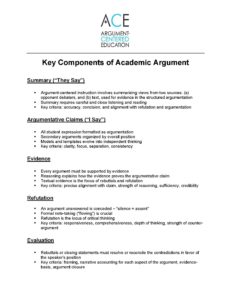 The actual assessment was rich in capturing how critically students thought about the novel, how they were able to engage with contrary views, how they are able to analyze text in relation to an argument, how concisely but fully they can summarize ideas and text.
The actual assessment was rich in capturing how critically students thought about the novel, how they were able to engage with contrary views, how they are able to analyze text in relation to an argument, how concisely but fully they can summarize ideas and text.
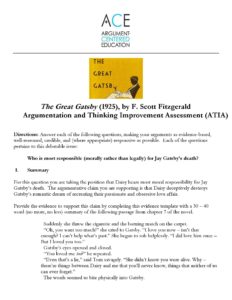 Argument-Centered Education is committed to helping its partner schools and teachers produce similar, though specifically adapted, assessments — ones that are challenging, filled with provocations to thinking and argument, valid, and coherently of a piece with unit instruction. Assessments designed in this way just might help restore for the literacy teacher (at least one that we work with) “the very May-morn of his youth” (Henry V, I.ii.119).
Argument-Centered Education is committed to helping its partner schools and teachers produce similar, though specifically adapted, assessments — ones that are challenging, filled with provocations to thinking and argument, valid, and coherently of a piece with unit instruction. Assessments designed in this way just might help restore for the literacy teacher (at least one that we work with) “the very May-morn of his youth” (Henry V, I.ii.119).


